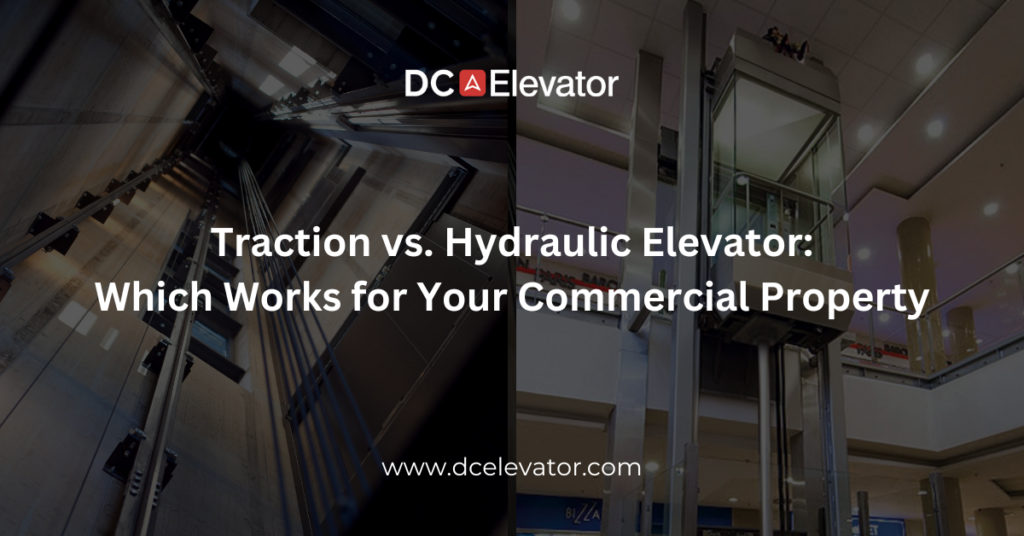Elevators are a fundamental component of commercial properties, providing efficient vertical transportation for tenants, employees, and visitors. When considering elevator installation or modernization, one of the crucial decisions is choosing between traction and hydraulic elevator systems. In this blog post, we’ll explore the differences between these two types of elevators and help you determine which one is the right fit for your commercial property.
Traction Elevators
How They Work:
Traction elevators are powered by an electric motor that drives an elevator car by means of cables and counterweights. They are known for their smooth and precise operation.
Advantages:
- Speed: Traction elevators are generally faster than hydraulic elevators, making them ideal for high-rise buildings.
- Efficiency: They are energy-efficient, as they consume less power during operation.
- Smooth Ride: Passengers often appreciate the smooth and jerk-free ride of traction elevators.
Ideal Use Cases:
Traction elevators are well-suited for:
- High-rise buildings
- Office complexes
- Hotels
- Shopping malls
- Hospitals
Hydraulic Elevators
How They Work:
Hydraulic elevators operate using a piston mechanism. They are powered by hydraulic fluid, and the elevator car is pushed or pulled by the movement of the fluid.
Advantages:
- Cost-Effective: Hydraulic elevators are generally more affordable to install than traction elevators.
- Reliability: They are known for their reliability and require minimal maintenance.
- Space-Saving: Hydraulic elevators typically require less overhead space, making them suitable for buildings with height restrictions.
Ideal Use Cases:
Hydraulic elevators are well-suited for:
- Low to mid-rise buildings
- Warehouses
- Residential buildings
- Small to medium-sized commercial properties
How to Choose the Right Elevator for Your Property
1. Building Height:
- Consider the number of floors in your commercial property. Traction elevators are better for taller buildings, while hydraulic elevators are suitable for lower-rise structures.
2. Budget:
- Evaluate your budget constraints. Hydraulic elevators are often more cost-effective for smaller commercial properties.
3. Space Availability:
- Assess the available space for elevator installation. Traction elevators typically require more overhead space, while hydraulic elevators are more space-efficient.
4. Expected Traffic:
- Determine the anticipated passenger traffic. Traction elevators are better for high-traffic areas.
5. Energy Efficiency:
- Consider your energy efficiency goals. Traction elevators tend to be more energy-efficient, which can lead to long-term cost savings.
